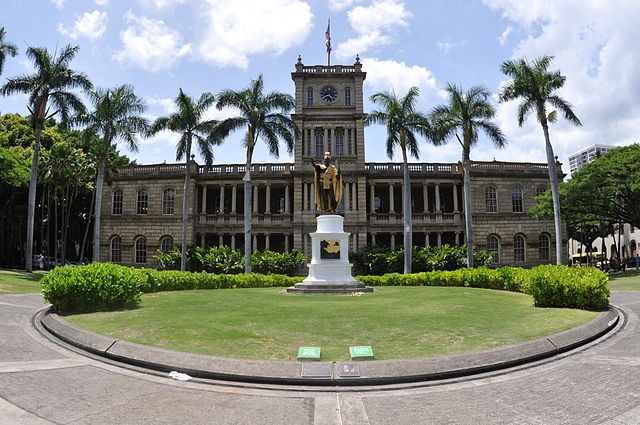
HONOLULU — After years of delay, including lengthy court battles and passionate protests from those willing to be arrested for blocking construction crews, builders of a giant telescope plan to move forward with constructing the $1.4 billion instrument on a Hawaii mountain that is considered sacred.
The state Supreme Court’s 4-1 ruling Tuesday is a victory for the contentious Thirty Meter Telescope planned for Hawaii’s tallest mountain, Mauna Kea. Opponents say the telescope will desecrate sacred land on the Big Island. Supporters say it will bring educational and economic opportunities to the state.
“Astronomy and Native Hawaiian uses on Mauna Kea have co-existed for many years and the TMT Project will not curtail or restrict Native Hawaiian uses,” the ruling said. The advanced telescope will answer some of the most fundamental questions of the universe, and Native Hawaiians will also benefit from it, the ruling added.
Associate Justice Michael Wilson dissented but didn’t immediately release his opinion.
There don’t appear to be any other avenues for the opponents to pursue. But Kealoha Pisciotta, one of the main leaders against the telescope, encouraged other telescope foes not to be disheartened.
“The court is the last bastion in democracy,” she said. “The only other option is to take to the streets. If we lose the integrity of the court, then you’re losing normal law and order, and the only other option is people have to rise up.”
When asked if that meant protests will resume, she said: “I’m encouraging people to stay close to their heart and aloha.”
Opponents and supporters have been awaiting the ruling because it was expected to help determine whether the project is built in Hawaii or moves to a backup location in Spain’s Canary Islands that’s less desirable to scientists hoping to use the instrument for groundbreaking discoveries.
Henry Yang, chair of the TMT International Observatory Board of Governors, said in a statement they are grateful the ruling will allow the telescope to be built on Mauna Kea.
When construction will resume depends on working out timing issues including conditions of the permit and re-mobilizing construction crews and equipment, said Scott Ishikawa, a spokesman for the project.
“We hope to have the state’s and county’s assurance in providing safe passage for our workers,” he said.
Gov. David Ige and other officials planned a news conference later in the day.
Plans for the project date to 2009, when scientists selected Mauna Kea after a five-year, around-the-world campaign to find the ideal site for what telescope officials said “will likely revolutionize our understanding of the universe.”
The project won a series of approvals from Hawaii, including a permit to build on conservation land in 2011.
Protests disrupted a groundbreaking and Hawaiian blessing ceremony at the site in 2014. After that, the protests intensified and divided the community, with some Native Hawaiians saying they were afraid to publicly support the project.
Construction stopped in April 2015 after 31 protesters were arrested for blocking the work. A second attempt to restart construction a few months later ended with more arrests and crews retreating when they encountered large boulders in the road.
Scientists revere the mountain for its summit above the clouds that provides a clear view of the sky with very little air and light pollution.
The telescope will allow astronomers to reach back 13 billion years to answer fundamental questions about the advent of the universe, touts a website for the project. “In the nearby universe, with TMT, astronomers will be able to discover and characterize, in detail, planets orbiting stars other than the Sun. There is the potential to examine these planets for signs of life beyond the Earth: this would be one of the most important discoveries of all time,” the website says.
Opponents appealed and in December 2015, the state Supreme Court revoked the permit, ruling the land board’s approval process was flawed. That meant the application process needed to be redone, requiring a new hearing.
After oftentimes emotional testimony for the hearing that spanned 44 days, the retired judge presiding over the proceeding recommended granting the permit. The judge set conditions that employees attend mandatory cultural and natural resources training and that employment opportunities be filled locally “to the greatest extent possible.”
Opponents appealed again after the land board approved the permit. They complained about various due process issues, including that the hearings officer had a conflict of interest because she was a member of a Big Island astronomy centre.
The connection was “too attenuated,” and membership doesn’t lead to supporting the telescope project, Tuesday’s Supreme Court ruling said.
A group of universities in California and Canada make up the telescope company, with partners from China, India and Japan. The instrument’s primary mirror would measure 98 feet (30 metres) in diameter. Compared with the largest existing visible-light telescope in the world, it would be three times as wide, with nine times more area.
Telescope parts have been built in California and partner countries while construction on Mauna Kea was halted.